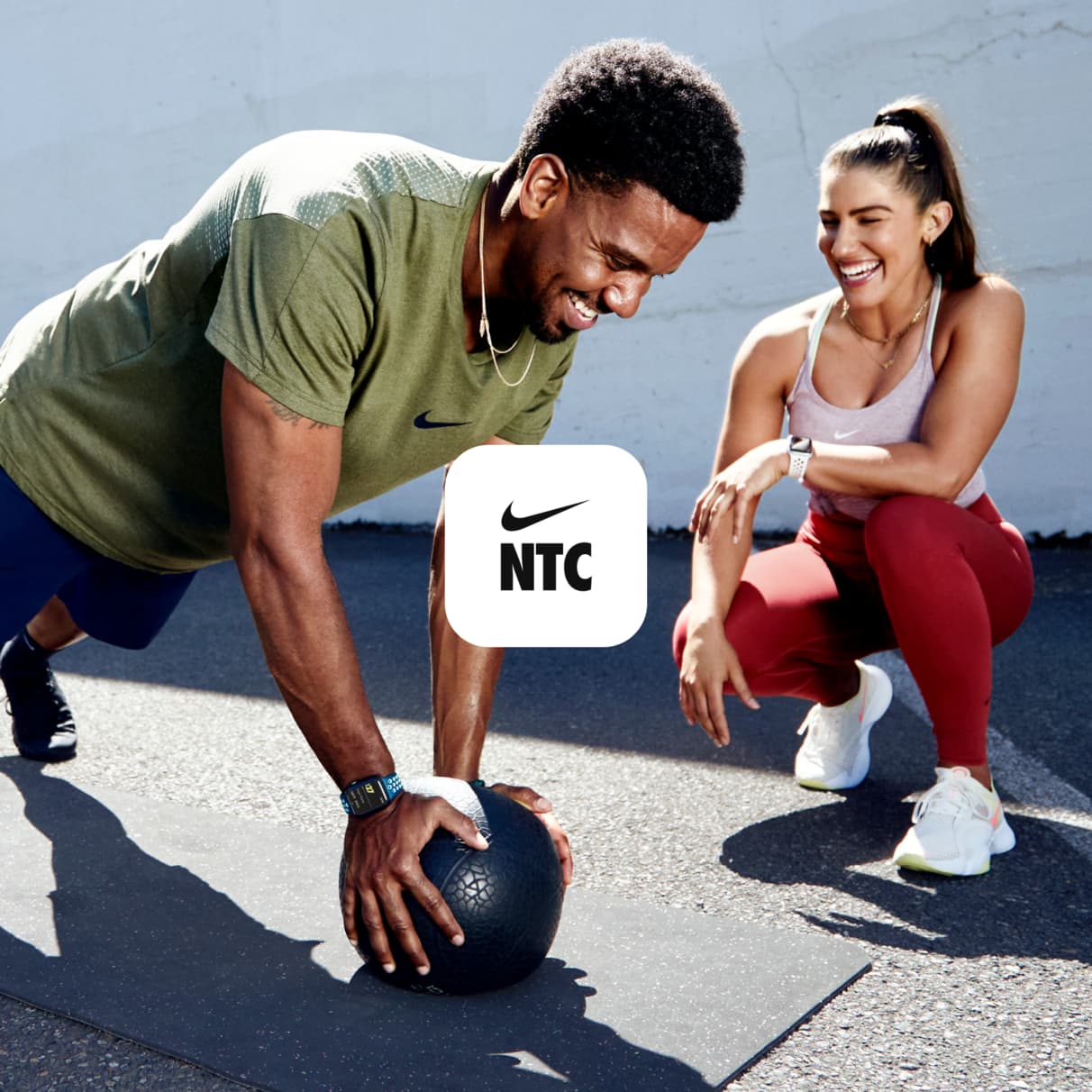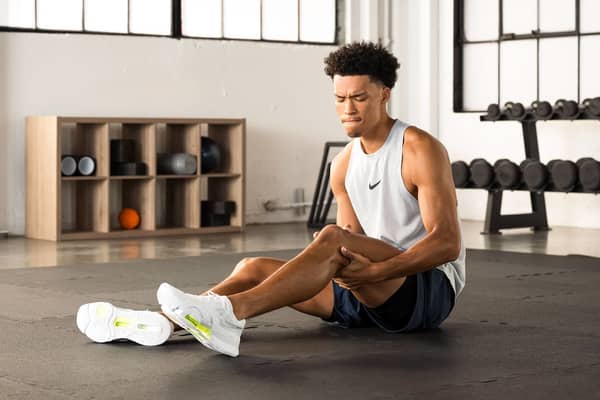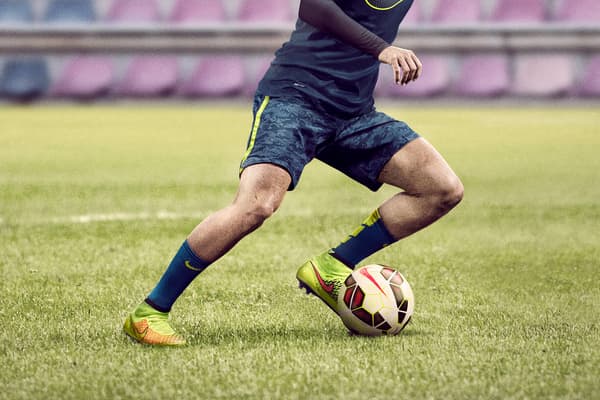What Are Torn Rotator Cuff Symptoms? Doctors Explain How To Treat It
Sport & Activity
Shoulder pain, weakness and limited range of motion can all be symptoms of a torn rotator cuff. Here's what to know about this injury and how it can be treated.

Picture this: You've been working on crushing the swimming portion of your next triathlon. Over the past few weeks, you've noticed a twinge in your shoulder that causes you to slow down—or even fully stop. What's going on? It's possible you could be dealing with a torn rotator cuff.
According to the Hospital for Special Surgery (located in NYC, New York), rotator cuff tears affect two to four million people in the US annually. But what exactly does it mean to have a torn rotator cuff? And if you are experiencing symptoms, do you have to have surgery?
Here's everything you need to know about the symptoms of a torn rotator cuff—and what to do to help the injury heal.
What exactly is the rotator cuff?
The rotator cuff is one of the most important parts of the shoulder, as it's responsible for holding the shoulder joint in place.
"The rotator cuff is a collection of muscles that attach the humerus to the scapula at the glenohumeral joint", said Cameron Yuen, PT, CSCS and physiotherapist at Bespoke Treatments. "The glenohumeral joint is a ball and socket joint that allows for mobility in multiple planes of motion".
This type of mobility, in all planes of motion, requires that the shoulder itself is sufficiently stable. "The rotator cuff provides this stability through co-contraction, which is when all of the muscles of the rotator cuff contract simultaneously", Yuen said.
In fact, there are four muscles that make up the rotator cuff. "You can remember them by the acronym SITS—subscapularis, infraspinatus, teres minor and supraspinatus", Yuen said.
Individually, the muscles of the rotator cuff help rotate the arm inwards and outwards and contribute to functional movements like reaching overhead or behind your back, Yuen said. "Each muscle pulls the shoulder into different degrees of rotation, or when co-contracting, keeps the shoulder tight in the joint", he said.
Are rotator cuff injuries common?
Because the rotator cuff is responsible for stability in the shoulder, it's used with almost every arm motion and movement. That means it's doing a lot all of the time—which makes it more susceptible to injury. This is especially true with sports and activities that involve repetitive movements or overhead motions such as baseball, swimming, tennis, rowing and weightlifting
(Related: 5 Expert-Approved Benefits of Using a Rowing Machine)
"Rotator cuff injuries are common in all ages, but most common in people over 60", said Jordan Metzl, MD, sports medicine doctor at the Hospital for Special Surgery. "That's because the collagen that makes up the tendon deteriorates with time, making the tendons more susceptible to injury".
There are two types of rotator cuff injuries—acute traumatic and repetitive use.
"Acute traumatic rotator cuff injuries happen from a one-time fall, usually on an outstretched hand such as slipping on the ice or falling from a skateboard", Metzl said. "More commonly, rotator cuff injuries happen gradually due to constant pressure and strain in the muscles and tendons over time". This is considered a repetitive or overuse injury.
"Disuse and poor tissue health and blood flow in individuals over 50 years old can also be a cause of rotator cuff tears", Yuen said.
You can also have a partial rotator cuff tear, or a full rotator cuff tear, depending on the severity. "In general, full tears are associated with more weakness but you need an MRI to truly get the full picture", Metzl said.
Symptoms of a Torn Rotator Cuff
Here are signs that you might be dealing with a full or partial rotator cuff tear. And remember, it's always best to consult with a doctor or licensed medical professional for an individual prognosis.
- You feel a deep, aching pain.
With any injury, you're expected to feel pain. When it comes to the rotator cuff, it's no different. "You're likely to feel pain in the shoulder and upper arm, "particularly at night and with overhead lifting", Metzl said. The pain will probably also be felt deep inside the body. "It's often described like a toothache in your shoulder", he said.
- You have trouble reaching overhead.
You might start to notice that not only do you experience pain when reaching overhead, but you may not be able to reach overhead at all. When this injury is present, "it's normal to feel a sensation of weakness when reaching overhead or to have difficulty doing overhead activities like lifting", Metzl said.
- Your range of motion is limited.
Along with a rotator cuff injury come restrictions that relate to movement with your arm. "Pain or the inability to reach behind your back, or to rotate the arm inwards or outwards are signs of a possible rotator cuff tear", Yuen said.
- You're losing muscle.
If you start to notice that along with discomfort, you're also experiencing muscle loss, this could be a sign of a rotator cuff tear. "You might experience muscle atrophy at the top of the shoulder or on the back of the shoulder blade", Yuen said.
How To Heal a Torn Rotator Cuff
If you believe you might have damaged your rotator cuff, the first step is to see a doctor. "Have an examination, an X-ray, and possibly an MRI to get a full and proper diagnosis", Metzl said. Once you know what is going on in the shoulder, you can then determine what steps to take.
Depending on age, cause, severity and damage to any other structures in the shoulder, surgery may be necessary to restore your full shoulder function.
"This is when there is a complete rupture of the muscle or, most commonly, where the muscle becomes tendon", Yuen said. But rotator cuff surgery should not be taken lightly.
"Recovering from rotator cuff surgery can take between six months to one year, ideally with ongoing shoulder exercises after", Yuen said.
Luckily, not all rotator cuff injuries need surgery. "In fact, most don't", Metzl said. "It's a good idea to try other approaches first".
If you're considering avoiding surgery or your injury doesn't require surgery, the next step would be to see a physiotherapist, ideally one that specialises in orthopaedics or sports medicine. Because the rotator cuff does not work on its own, but rather works to stabilise the shoulder as other muscles produce movement, progression in rehabilitation will include exercises that first strengthen the rotator cuff, and then involve the rotator cuff in more functional movements, Yuen said.
"The physiotherapist will prescribe mobility and strengthening exercises to restore your function while reconditioning your weaknesses", he said. "The priorities are to reduce pain by decreasing inflammation and increasing blood flow, restoring full shoulder mobility, and then strengthening the muscles of the rotator cuff, as well as the larger muscles of the shoulder and scapula".
Following the treatment plan from a therapist can help you regain strength and stability in the shoulder, and continuing to do your exercises can prevent another rotator cuff injury in the future.
Words by Amy Schlinger, NASM-CPT





